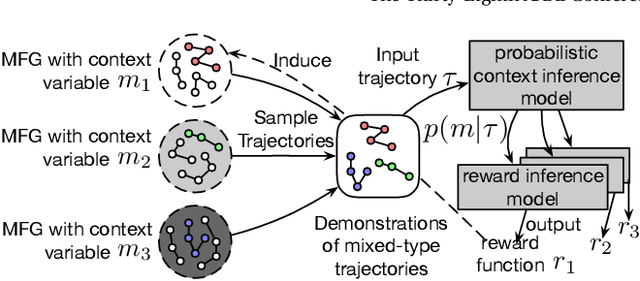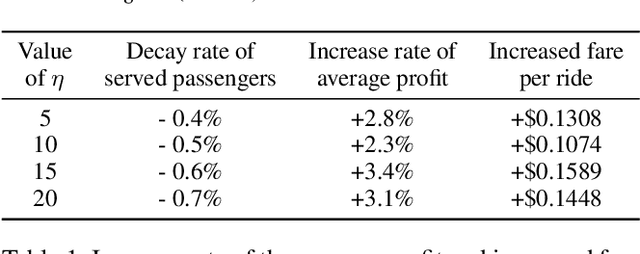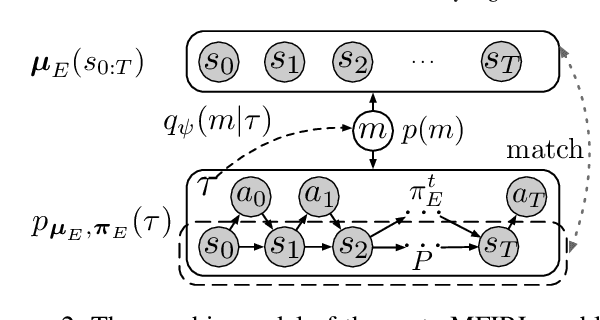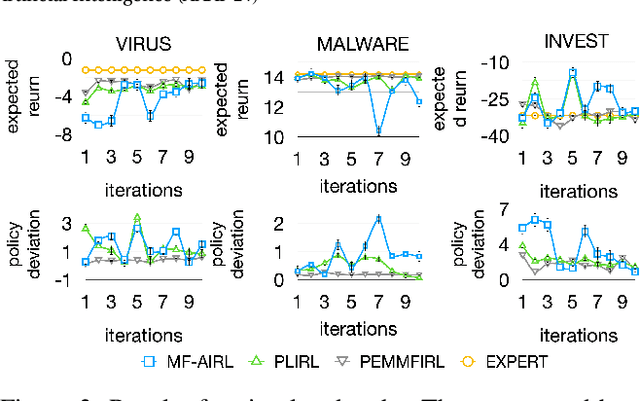Yang Chen
Department of Statistics, University of Michigan, Ann Arbor, Michigan Institute for Data Science, University of Michigan, Ann Arbor
LibContinual: A Comprehensive Library towards Realistic Continual Learning
Dec 26, 2025Abstract:A fundamental challenge in Continual Learning (CL) is catastrophic forgetting, where adapting to new tasks degrades the performance on previous ones. While the field has evolved with diverse methods, this rapid surge in diverse methodologies has culminated in a fragmented research landscape. The lack of a unified framework, including inconsistent implementations, conflicting dependencies, and varying evaluation protocols, makes fair comparison and reproducible research increasingly difficult. To address this challenge, we propose LibContinual, a comprehensive and reproducible library designed to serve as a foundational platform for realistic CL. Built upon a high-cohesion, low-coupling modular architecture, LibContinual integrates 19 representative algorithms across five major methodological categories, providing a standardized execution environment. Meanwhile, leveraging this unified framework, we systematically identify and investigate three implicit assumptions prevalent in mainstream evaluation: (1) offline data accessibility, (2) unregulated memory resources, and (3) intra-task semantic homogeneity. We argue that these assumptions often overestimate the real-world applicability of CL methods. Through our comprehensive analysis using strict online CL settings, a novel unified memory budget protocol, and a proposed category-randomized setting, we reveal significant performance drops in many representative CL methods when subjected to these real-world constraints. Our study underscores the necessity of resource-aware and semantically robust CL strategies, and offers LibContinual as a foundational toolkit for future research in realistic continual learning. The source code is available from \href{https://github.com/RL-VIG/LibContinual}{https://github.com/RL-VIG/LibContinual}.
Artism: AI-Driven Dual-Engine System for Art Generation and Critique
Dec 17, 2025Abstract:This paper proposes a dual-engine AI architectural method designed to address the complex problem of exploring potential trajectories in the evolution of art. We present two interconnected components: AIDA (an artificial artist social network) and the Ismism Machine, a system for critical analysis. The core innovation lies in leveraging deep learning and multi-agent collaboration to enable multidimensional simulations of art historical developments and conceptual innovation patterns. The framework explores a shift from traditional unidirectional critique toward an intelligent, interactive mode of reflexive practice. We are currently applying this method in experimental studies on contemporary art concepts. This study introduces a general methodology based on AI-driven critical loops, offering new possibilities for computational analysis of art.
Single-Agent Scaling Fails Multi-Agent Intelligence: Towards Foundation Models with Native Multi-Agent Intelligence
Dec 16, 2025Abstract:Foundation models (FMs) are increasingly assuming the role of the ''brain'' of AI agents. While recent efforts have begun to equip FMs with native single-agent abilities -- such as GUI interaction or integrated tool use -- we argue that the next frontier is endowing FMs with native multi-agent intelligence. We identify four core capabilities of FMs in multi-agent contexts: understanding, planning, efficient communication, and adaptation. Contrary to assumptions about the spontaneous emergence of such abilities, we provide extensive empirical evidence, across 41 large language models and 7 challenging benchmarks, showing that scaling single-agent performance alone does not automatically yield robust multi-agent intelligence. To address this gap, we outline key research directions -- spanning dataset construction, evaluation, training paradigms, and safety considerations -- for building FMs with native multi-agent intelligence.
Nemotron-Cascade: Scaling Cascaded Reinforcement Learning for General-Purpose Reasoning Models
Dec 15, 2025Abstract:Building general-purpose reasoning models with reinforcement learning (RL) entails substantial cross-domain heterogeneity, including large variation in inference-time response lengths and verification latency. Such variability complicates the RL infrastructure, slows training, and makes training curriculum (e.g., response length extension) and hyperparameter selection challenging. In this work, we propose cascaded domain-wise reinforcement learning (Cascade RL) to develop general-purpose reasoning models, Nemotron-Cascade, capable of operating in both instruct and deep thinking modes. Departing from conventional approaches that blend heterogeneous prompts from different domains, Cascade RL orchestrates sequential, domain-wise RL, reducing engineering complexity and delivering state-of-the-art performance across a wide range of benchmarks. Notably, RLHF for alignment, when used as a pre-step, boosts the model's reasoning ability far beyond mere preference optimization, and subsequent domain-wise RLVR stages rarely degrade the benchmark performance attained in earlier domains and may even improve it (see an illustration in Figure 1). Our 14B model, after RL, outperforms its SFT teacher, DeepSeek-R1-0528, on LiveCodeBench v5/v6/Pro and achieves silver-medal performance in the 2025 International Olympiad in Informatics (IOI). We transparently share our training and data recipes.
DINO-BOLDNet: A DINOv3-Guided Multi-Slice Attention Network for T1-to-BOLD Generation
Dec 09, 2025Abstract:Generating BOLD images from T1w images offers a promising solution for recovering missing BOLD information and enabling downstream tasks when BOLD images are corrupted or unavailable. Motivated by this, we propose DINO-BOLDNet, a DINOv3-guided multi-slice attention framework that integrates a frozen self-supervised DINOv3 encoder with a lightweight trainable decoder. The model uses DINOv3 to extract within-slice structural representations, and a separate slice-attention module to fuse contextual information across neighboring slices. A multi-scale generation decoder then restores fine-grained functional contrast, while a DINO-based perceptual loss encourages structural and textural consistency between predictions and ground-truth BOLD in the transformer feature space. Experiments on a clinical dataset of 248 subjects show that DINO-BOLDNet surpasses a conditional GAN baseline in both PSNR and MS-SSIM. To our knowledge, this is the first framework capable of generating mean BOLD images directly from T1w images, highlighting the potential of self-supervised transformer guidance for structural-to-functional mapping.
Learning by Neighbor-Aware Semantics, Deciding by Open-form Flows: Towards Robust Zero-Shot Skeleton Action Recognition
Nov 12, 2025Abstract:Recognizing unseen skeleton action categories remains highly challenging due to the absence of corresponding skeletal priors. Existing approaches generally follow an "align-then-classify" paradigm but face two fundamental issues, i.e., (i) fragile point-to-point alignment arising from imperfect semantics, and (ii) rigid classifiers restricted by static decision boundaries and coarse-grained anchors. To address these issues, we propose a novel method for zero-shot skeleton action recognition, termed $\texttt{$\textbf{Flora}$}$, which builds upon $\textbf{F}$lexib$\textbf{L}$e neighb$\textbf{O}$r-aware semantic attunement and open-form dist$\textbf{R}$ibution-aware flow cl$\textbf{A}$ssifier. Specifically, we flexibly attune textual semantics by incorporating neighboring inter-class contextual cues to form direction-aware regional semantics, coupled with a cross-modal geometric consistency objective that ensures stable and robust point-to-region alignment. Furthermore, we employ noise-free flow matching to bridge the modality distribution gap between semantic and skeleton latent embeddings, while a condition-free contrastive regularization enhances discriminability, leading to a distribution-aware classifier with fine-grained decision boundaries achieved through token-level velocity predictions. Extensive experiments on three benchmark datasets validate the effectiveness of our method, showing particularly impressive performance even when trained with only 10\% of the seen data. Code is available at https://github.com/cseeyangchen/Flora.
Chain-of-Thought Re-ranking for Image Retrieval Tasks
Sep 18, 2025



Abstract:Image retrieval remains a fundamental yet challenging problem in computer vision. While recent advances in Multimodal Large Language Models (MLLMs) have demonstrated strong reasoning capabilities, existing methods typically employ them only for evaluation, without involving them directly in the ranking process. As a result, their rich multimodal reasoning abilities remain underutilized, leading to suboptimal performance. In this paper, we propose a novel Chain-of-Thought Re-Ranking (CoTRR) method to address this issue. Specifically, we design a listwise ranking prompt that enables MLLM to directly participate in re-ranking candidate images. This ranking process is grounded in an image evaluation prompt, which assesses how well each candidate aligns with users query. By allowing MLLM to perform listwise reasoning, our method supports global comparison, consistent reasoning, and interpretable decision-making - all of which are essential for accurate image retrieval. To enable structured and fine-grained analysis, we further introduce a query deconstruction prompt, which breaks down the original query into multiple semantic components. Extensive experiments on five datasets demonstrate the effectiveness of our CoTRR method, which achieves state-of-the-art performance across three image retrieval tasks, including text-to-image retrieval (TIR), composed image retrieval (CIR) and chat-based image retrieval (Chat-IR). Our code is available at https://github.com/freshfish15/CoTRR .
Kalman Filtering of Stationary Graph Signals
Sep 16, 2025Abstract:In this paper, we propose a novel definition of stationary graph signals, formulated with respect to a symmetric graph shift, such as the graph Laplacian. We show that stationary graph signals can be generated by transmitting white noise through polynomial graph channels, and that their stationarity is preserved under polynomial channel transmission. In this paper, we also investigate Kalman filtering to dynamical systems characterized by polynomial state and observation matrices. We demonstrate that Kalman filtering maintains the stationarity of graph signals, while effectively incorporating both system dynamics and noise structure. In comparison to the static inverse filtering method and naive zero-signal strategy, the Kalman filtering procedure yields more accurate and adaptive signal estimates, highlighting its robustness and versatility in graph signal processing.
Meta-Inverse Reinforcement Learning for Mean Field Games via Probabilistic Context Variables
Sep 04, 2025



Abstract:Designing suitable reward functions for numerous interacting intelligent agents is challenging in real-world applications. Inverse reinforcement learning (IRL) in mean field games (MFGs) offers a practical framework to infer reward functions from expert demonstrations. While promising, the assumption of agent homogeneity limits the capability of existing methods to handle demonstrations with heterogeneous and unknown objectives, which are common in practice. To this end, we propose a deep latent variable MFG model and an associated IRL method. Critically, our method can infer rewards from different yet structurally similar tasks without prior knowledge about underlying contexts or modifying the MFG model itself. Our experiments, conducted on simulated scenarios and a real-world spatial taxi-ride pricing problem, demonstrate the superiority of our approach over state-of-the-art IRL methods in MFGs.
Alternating Training-based Label Smoothing Enhances Prompt Generalization
Aug 25, 2025



Abstract:Recent advances in pre-trained vision-language models have demonstrated remarkable zero-shot generalization capabilities. To further enhance these models' adaptability to various downstream tasks, prompt tuning has emerged as a parameter-efficient fine-tuning method. However, despite its efficiency, the generalization ability of prompt remains limited. In contrast, label smoothing (LS) has been widely recognized as an effective regularization technique that prevents models from becoming over-confident and improves their generalization. This inspires us to explore the integration of LS with prompt tuning. However, we have observed that the vanilla LS even weakens the generalization ability of prompt tuning. To address this issue, we propose the Alternating Training-based Label Smoothing (ATLaS) method, which alternately trains with standard one-hot labels and soft labels generated by LS to supervise the prompt tuning. Moreover, we introduce two types of efficient offline soft labels, including Class-wise Soft Labels (CSL) and Instance-wise Soft Labels (ISL), to provide inter-class or instance-class relationships for prompt tuning. The theoretical properties of the proposed ATLaS method are analyzed. Extensive experiments demonstrate that the proposed ATLaS method, combined with CSL and ISL, consistently enhances the generalization performance of prompt tuning. Moreover, the proposed ATLaS method exhibits high compatibility with prevalent prompt tuning methods, enabling seamless integration into existing methods.
 Add to Chrome
Add to Chrome Add to Firefox
Add to Firefox Add to Edge
Add to Edge